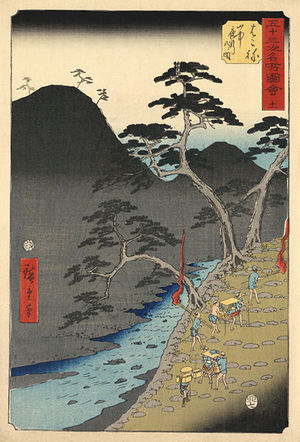Some people might believe paintings are the only two-dimensional artworks worth buying, but if so, they’re missing a whole wide world of other possibilities.
Take, for example, antique art prints. Chances are you’ve never thought of these are being collectible, but they’re not to be confused with cheap reproductions.
Savvy collectors are snapping up art prints, both as objects of beauty and for their historical value. And as a bonus, the subject matter can take the viewer to some exotic and faraway places.
Old maps and cartography, especially pre-18th century, are always sought after by collectors – particularly maps of California that envisioned it as an island, or those that display fantastic sights, like fearsome sea monsters rising from the waters around unknown continents.
Maps also can be adapted to many kinds of rooms in the home, if the owners care to display them, and can be amusing or insightful conversation pieces.
According to Dana Conley Lyons, gallery director of Lyons Ltd. Antique Prints in Palo Alto, California, the most desirable maps are those that reveal outdated views of what are now familiar places, what she calls “curiosities.”
“Maps are always popular, and they’ve been retaining their value very well, and also going up in value,” said Lyons. “An old map is very attractive to people who love to travel, or who are interested in world politics.”
The maps have historical interest as well, such as those showing Captain Cook’s circumnavigation or other feats of early seamanship.
But maps are just one subject area in the world of antique art prints, which span a wide variety of subject matter.
Art prints are most valuable when they are antique – in general, created before 1900 – and made by the artist, or under direction of the artist, during his or her lifetime. The category includes etchings, engravings, lithographs, woodcuts, and images made using a number of other techniques. All art prints involve cutting or chemically etching a design into a block or plate and then making prints from that design.
Many art prints were originally created as a way to illustrate natural history, such as Audubon’s birds, or to capture architectural details, such as the work of Giovanni Batista Piranesi.
The subject matter of art prints, however, is far-ranging – at the Lyons gallery, the collection of more than 600,000 graphics includes everything from children’s book illustrations to records of historical events. Yet art prints are also eye-pleasing and beautiful, despite their often pedestrian origins.
Many 18th and 19th-century engravings were made to illustrate scientific research, and to educate the populace,” said Lyons, which is why antique art prints often have animals and plants as their focus.
Like any other type of collectible, trends come and go. Lyons observes that West Coast collectors latch on to art prints with themes that echo current styles in fabrics and home décor.
Lyons said right now seashore motifs are popular with major home designers, such as Williams Sonoma, and so she has noticed an increasing desire for collectible art prints displaying sea shells, coral and marine life.
This trend Lyons directly links to the publication of the 2003 book “Albertus Seba’s Cabinet of Natural Curiosities,” which highlights the natural history collection of this 18th-century Amsterdam pharmacist. Seba amassed an enormous group of plants, animals and insects from around the world, and toward the end of his life, commissioned illustrations of each and every specimen.
Original prints commissioned by Seba fetch quite a price, as you can imagine. A Seba print of helmet shells at Lyons Ltd. Antique Prints is currently being offered for $1,500.
However, collecting art prints doesn’t have to be terribly expensive – collectors on a budget can also find choices in the $100 range.
Some collectors enjoy displaying the prints they purchase, while others acquire them simply for the joy of collecting. “Sometimes, collectors buy them just to have them,” because they’re beautiful, rare or are being purchased as an investment, she said.
There’s quite a bit of variation in what collectors in different parts of the country seek. Lyons said that East Coast collectors look for different things than West Coast buyers, and there are also regional distinctions as well.
For instance, Southern California collectors now are seeking modernistic prints created anywhere between the 1920s and 1970s, as well as Japanese woodblock prints.
One art print theme that never seems to go out of style are botanicals – illustrations of flowers and plants. “They’re always popular,” said Lyons.
Even though the look of antique art prints belongs to earlier times, there are ways to make them work with just about any interior design.
Lyons said that the gallery often helps collectors integrate “very antique-looking” prints into homes with a decidedly modern design. The key, she said, is finding the right frame for the art work.
“If it’s framed in a very modern, stylized way, it can be fabulous,” said Lyons.
Sources:
Interview with Dana Conley Lyons, February 2008
www.lyonsltd.com
http://en.wikipedia.org/wiki/Albertus_Seba




